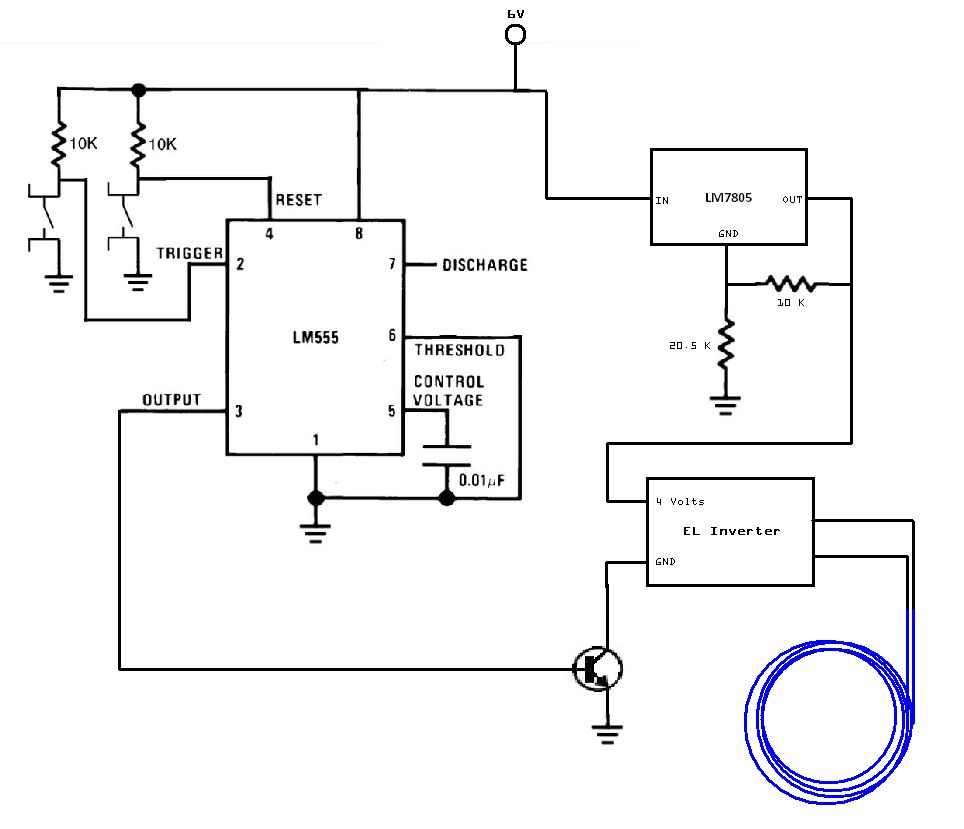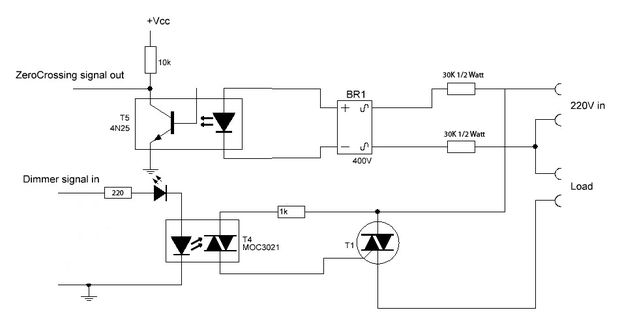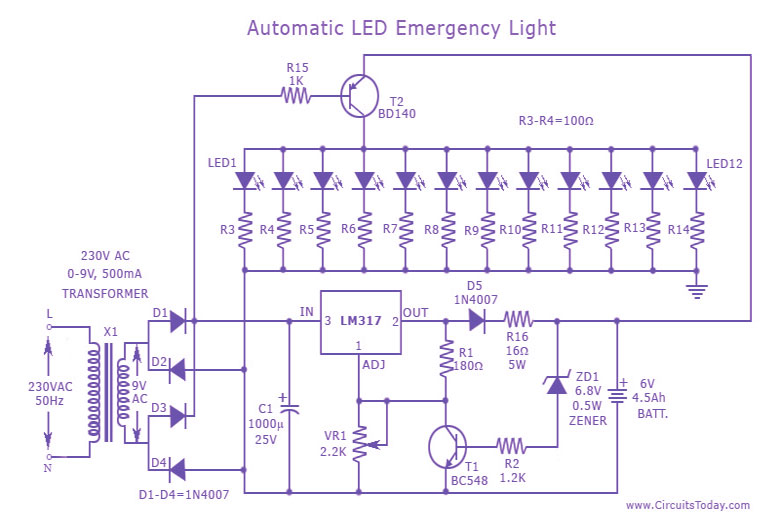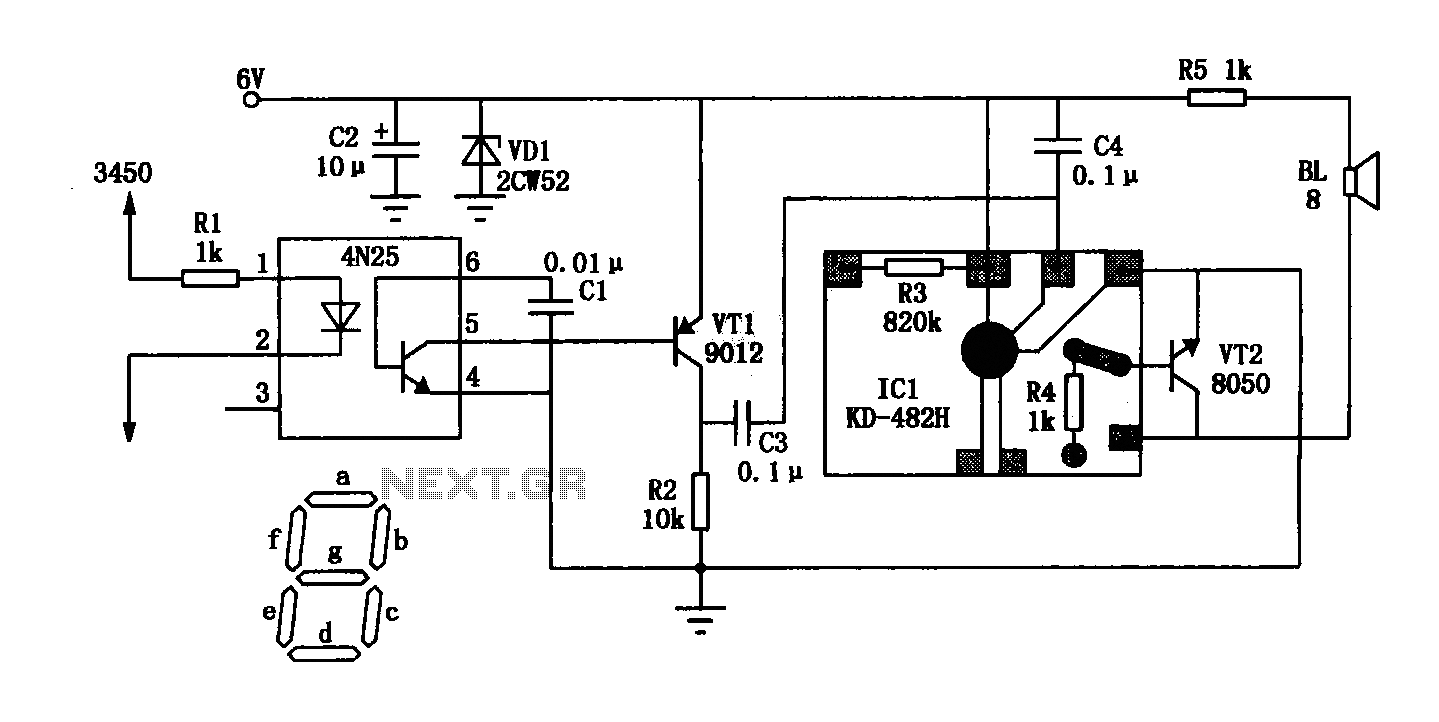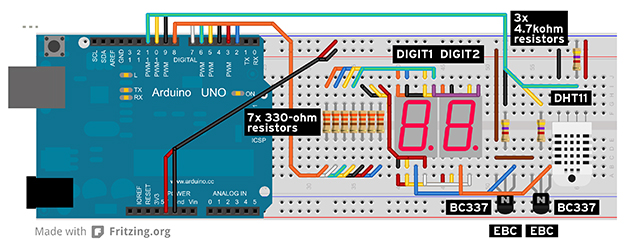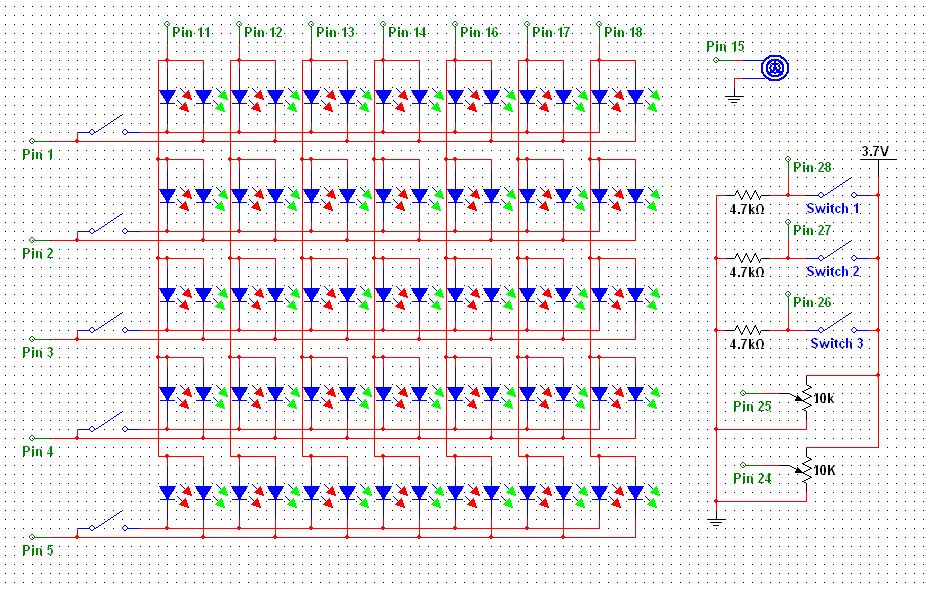
230V Blinking LED
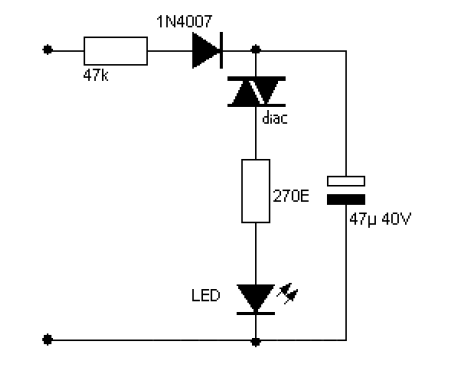
A pulsating light is used for signaling purposes with a voltage of 230V. A simple circuit has been designed, consisting of an LED diode, two capacitors, two resistors, a diac, and a diode. The operation of the circuit is straightforward. The capacitor charges through the diode and one of the resistors. When the voltage across the capacitor reaches 30V, the diac activates, releasing the electrical charge and causing the capacitor to discharge through the diac, resulting in the LED blinking. The timing of the blinking is determined by the values of the capacitor and the resistor connected in series with the diode (1N4007). The capacitor must have a voltage rating of at least 40V.
This circuit operates by utilizing the properties of the diac, which acts as a switching device. Initially, when power is applied to the circuit, the capacitor begins to charge through the current-limiting resistor and the rectifying diode (1N4007). The charging process continues until the voltage across the capacitor reaches the breakdown voltage of the diac, which is typically around 30V. At this point, the diac enters its conductive state, allowing the stored charge in the capacitor to rapidly discharge through the diac and the LED, creating a visible blinking effect.
The frequency of the blinking LED is influenced by the RC time constant of the circuit, which is determined by the product of the resistance (R) and capacitance (C) values. The two resistors can be configured to fine-tune the charging time of the capacitor, thereby adjusting the blinking rate of the LED. Additionally, the use of two capacitors can introduce further flexibility in timing adjustments, potentially allowing for different blinking patterns or durations.
It is important to select components that can handle the operating voltage and current levels. The diode (1N4007) is rated for 1A and can withstand reverse voltages up to 1000V, making it suitable for this application. The diac should also be chosen based on its breakdown voltage and current handling capabilities to ensure reliable operation. The capacitors must be rated for voltages higher than 40V to prevent breakdown during operation.
Overall, this circuit serves as an effective and simple solution for generating a pulsating light signal, suitable for various signaling applications in electronic projects. Proper selection of component values and ratings is essential for optimal performance and reliability of the circuit.A pulsating light for a certain signaling. Voltage was 230V. So I decided to make a simple circuit, consisted of a LED diode, two capacitors, two resistors, a diac and a diode. Activity of the circuit is extraordinarily simple. The capacitor charges by the diode and the resistor. When the voltage on the capacitor achieves 30V the diac "releases" the electrical tension and the capacitor empties thorough the diac, LED blinks.
Time base is dependent from the capacitor and the resistor, which is in series with diode 1N4007. Capacitor must be at least for 40V. 🔗 External reference
This circuit operates by utilizing the properties of the diac, which acts as a switching device. Initially, when power is applied to the circuit, the capacitor begins to charge through the current-limiting resistor and the rectifying diode (1N4007). The charging process continues until the voltage across the capacitor reaches the breakdown voltage of the diac, which is typically around 30V. At this point, the diac enters its conductive state, allowing the stored charge in the capacitor to rapidly discharge through the diac and the LED, creating a visible blinking effect.
The frequency of the blinking LED is influenced by the RC time constant of the circuit, which is determined by the product of the resistance (R) and capacitance (C) values. The two resistors can be configured to fine-tune the charging time of the capacitor, thereby adjusting the blinking rate of the LED. Additionally, the use of two capacitors can introduce further flexibility in timing adjustments, potentially allowing for different blinking patterns or durations.
It is important to select components that can handle the operating voltage and current levels. The diode (1N4007) is rated for 1A and can withstand reverse voltages up to 1000V, making it suitable for this application. The diac should also be chosen based on its breakdown voltage and current handling capabilities to ensure reliable operation. The capacitors must be rated for voltages higher than 40V to prevent breakdown during operation.
Overall, this circuit serves as an effective and simple solution for generating a pulsating light signal, suitable for various signaling applications in electronic projects. Proper selection of component values and ratings is essential for optimal performance and reliability of the circuit.A pulsating light for a certain signaling. Voltage was 230V. So I decided to make a simple circuit, consisted of a LED diode, two capacitors, two resistors, a diac and a diode. Activity of the circuit is extraordinarily simple. The capacitor charges by the diode and the resistor. When the voltage on the capacitor achieves 30V the diac "releases" the electrical tension and the capacitor empties thorough the diac, LED blinks.
Time base is dependent from the capacitor and the resistor, which is in series with diode 1N4007. Capacitor must be at least for 40V. 🔗 External reference
